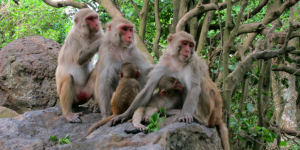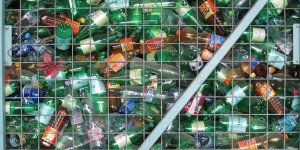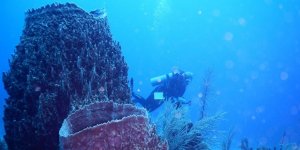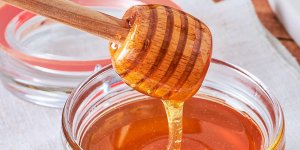Science News

Study proves value of electromagnetic techniques in a new polar application. »

Number of grooming partners predicts the size of certain brain areas. »

3D-printing technique could transform medical testing devices. »

Findings could boost recovery and replanting after disasters. »

Splintering of frozen liquid droplets to form ice shards an important process. »

But many likely benefit from efforts to save other animals. »

Technology could lead to more efficient and effective mass testing. »

Metal-organic framework used to degrade plastics. »

From sponge's microbiome, scientists gain insights into evolutionary past. »

A more organic memristor that can process and store data is born. »

Advance could reduce emissions and help combat climate change. »

Breakthrough could lead to better particle accelerators and novel materials imaging. »

Increasing aridity contributed to Norse abandonment of settlements in the 15th century. »

Youngsters can take to the water as early as 2 days old. »

Study of organisms in the sea identifies 5,500 new species. »

Research suggests where these species may be 'hidden'. »

Clue from vast stores of helium from the Big Bang lingering in the core. »

Previously unknown migratory movement brought knowledge of maize agriculture. »

Restored oyster reefs can match natural oyster populations. »

Permafrost at high elevations is more vulnerable than Arctic permafrost. »

Breakthrough could result in new psychiatric and neurological pharmaceuticals. »

Researchers lead effort to find natural option to protect crops. »

Experiment examines the physics of plasma eruptions and solar flares. »

Scientists conduct experiment on 23 generations of tiny sea creatures. »

Scientists have found that monarch butterflies are increasingly plagued by parasites. »

Preserving tree cover may be essential in helping the gray fox survive with coyotes. »

Five-stage scoring scale gauges the harmful effects of road salt on freshwater. »

Around the world, many birds side-step the costs of parenthood by laying their eggs in the nest of other species. »

Engineers have developed "virtual eyes" that closely mimic human eye behavior. »

Icefields that stretch for hundreds of miles atop the Andes Mountains are melting. »

Spinosaurus is the biggest carnivorous dinosaur ever discovered but the way it hunted has been a subject of debate for decades. »

Remains of plant material wedged between layers of volcanic rock. »

Sensor is quicker and cheaper than current opioid wastewater monitoring methods. »

Data from the research yield a new aerodynamic model and flight simulator. »

New study challenges long-held assumptions about the structure of the sun's atmosphere. »

New model shows leaves appearing 1-2 days earlier each decade. »

Humans are usually pretty good at recognising when they get things wrong, but artificial intelligence systems are not. »

Data from powerful mass spectrometer survey and document omnipresent compounds. »

New Zealand’s tuatara look like somber iguanas. But these spiny reptiles are not actually lizards. »

Australian scientists have identified a novel combination of genetics that may help wheat survive in hot and dry conditions. »

New theory to explain how Earth transformed into a planet capable of sustaining life. »

New marine phytoplankton species become a self-fertilizing system. »

The biomineralized remains are lightweight and damage resistant. »

Chocolate is made from cacao beans, and research shows that 20 - 40 percent of the world's cacao beans are lost to cacao plant diseases. »

New research provides evidence of demographic shifts in sub-Saharan Africa. »

Environmental structure affects interactions among microbial species. »

Ancient receptor protein can detect molecules in smoke from burnt plant material. »

Pharmaceutical pollution in the world’s rivers is threatening environmental and human health (...) »

Cyanide could have enabled metabolic reactions, creating carbon-based compounds. »

On a spring day 66 million years ago, an asteroid (...) »